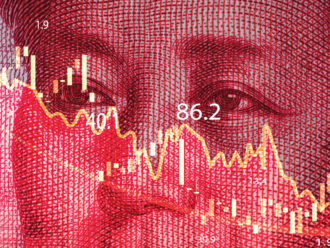Furthermore, looking at 21-day annualised volatility for the Dow Jones Industrial Average (DJIA) going back as far as 1896, there were four periods when volatility was more extreme than that experienced during this financial crisis. The volatile episodes seen in the 1980s, 1930s and early 1910s were all worse than 2008.
A look at the DJIA volatility by decade between 1986 and 2014 also serves to demonstrate that the decade covering the 2000s was only the third most volatile decade, clocking 17.9% compared to 25.5% for the 1930s and 18.2% for the 1890s.
And since the 1940s only two decades – the 1980s and the 2000s – have exceeded the average volatility for any decade since the 1890s of 14.4%. Yet, between 1890 and 1940, all five decades saw average volatility above that long-term average. In fact, the general long-term trend in volatility between the 1890s and the last full decade (2000s) has been downwards. During the current decade, volatility has, so far, remained well below average at 13.1%.
Rather than volatility increasing, perhaps the environment feels different for another reason. In a world where information is much more readily available and far greater scrutiny is placed on how many institutional investment funds perform, taking a decade- long perspective on volatility is a tough ask for anyone with fiduciary responsibility. Perhaps it is the increasingly shortterm view of investors that really sits at the heart of the ‘new’ world we find ourselves in today.
As Ed Peters, co-director of global macro, First Quadrant, says: “Long-term averages make sense if you are willing to wait 20 years. Volatility regimes tend to last three to five years and if you’re positioned incorrectly with asset prices falling and liabilities increasing for five years, your job is going to be on the line. That is not the way this business works.”
Some of the perception of a more volatile world is simply a misinterpretation of the data available. “People think markets are getting more volatile when they are not,” Peters argues. “People are just more aware that volatility moves around. Measuring volatility means people react more. During 2008 there were days where the market moved up or down seven or eight percent and we have since had a long period of very little volatility. Now we are getting back to something closer to average so it feels a lot more volatile.”
In some regards, we find ourselves in uncharted economic territory. The length of the recovery, the scale of quantitative easing and the lack of cohesion between the financial and business cycles suggest markets are in an unprecedented state, or ‘new normal’. However, although markets have undergone fundamental change since the 1980s, evidence suggests the volatility backdrop is no different from what markets have experienced in the past. In this regard, the same old normal persists.




Comments